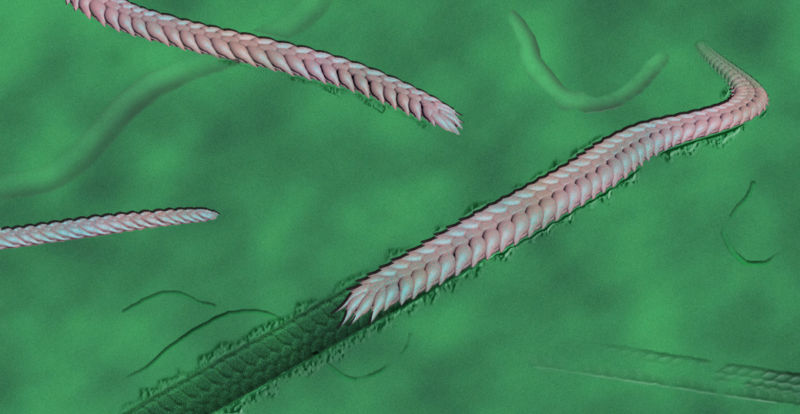Before life exploded in the Cambrian, there were worms

Enlarge (credit: Dr. Zhe Chen/Nanjing Institute of Geology and Paleontology)
The Cambrian is rightly famous for being the period when animal life first exploded into a dizzying diversity of forms, including some body plans that remain with us today. But the first animals in the fossil record predate the Cambrian by tens of millions of years. Entire ecosystems of creatures appeared over about 50 million years near the end of the Ediacaran Period and then vanished at the start of the Cambrian.
But the Ediacaran animals were rather strange, with body plans that don't even have the same starting materials as the more familiar Cambrian forms do. And most of them weren't mobile, instead simply attaching themselves to surfaces and staying there. There were, however, limited indications that the ancestors of Cambrian animals had already evolved in the Ediacaran. Traces left in sediments indicated that something was moving through them, and one odd disk-like creature appeared to have had a bilateral body plan. But the tracks weren't left by anything disk shaped, raising questions about what else might have been moving around in the Ediacaran.
Those questions have been at least partially resolved with today's announcement of Yilingia spiciformis, an Ediacaran worm that wouldn't look entirely out of place in today's oceans. Yilingia was segmented, it created tracks, and it even appears to have been able to burrow into sediments. And it managed to do all that without any prominent structures at its head.
Read 7 remaining paragraphs | Comments